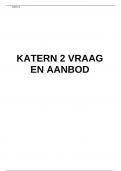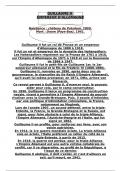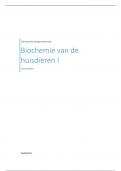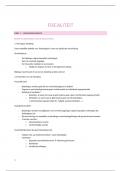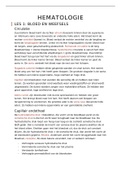Session 2: Diversification benefits and costs
Zhou, Y. M. (2011). Synergy, coordination costs, and diversification choices.
Topic and contribution
Previous research just focused on the comparative synergistic benefits of related diversification vs
unrelated diversification. This research looks into the coordination costs that are higher in related
diversification.
The paper extends in two ways:
It shows a mechanism that causes both synergy gains and coordination costs to rise with the related
diversification: input sharing between business lines.
Limits of related diversification are understudied.
A related diversification gives synergetic benefits but also coordination costs and the synergetic
benefits should outperform the coordination costs (through input sharing).
Input sharing: Coordination costs Indivisibility
Raw materials - machine hours
Technology - Raw materials
Knowledge Synergies
Inputs are often indivisible and difficult to share between firms coordination costs.
The research build on the recent modularity literature: when marginal coordination costs > marginal
synergistic benefits worse performance.
Corporate-level complexity in the firm’s existing business lines, or high interdependence between
them increases coordination costs.
Complexity: Aircraft sector is very complex because everything needs to be very safe, thus very much
control in supply-chain.
Firms can reduce the complexity in their own corporation through:
- Standardizing (one process)
- Outsourcing (other ones) things become more simple because you do less yourself.
Portfolio Theory : firm pursue unrelated diversification to reduce business risk when there are
bankruptcy costs or transaction costs that prevent shareholders from fully diversifying their
investments in capital markets.
Modern Portfolio Theory (MPT) is an investment approach that helps investors build a portfolio
aiming to maximize expected returns while managing risk. It operates on the premise that, all else
being equal, investors typically favor less risky portfolios for a given level of expected return due to
their risk-averse nature. (Investors can make a portfolio themselves businesses don’t have to do that)
Agency theory managers pursue unrelated diversification for their private benefits.
Institutional theory: firms often follow each other into new markets related or unrelated through
mimetic processes.
Framing and hypotheses
,H1: A firm is less likely to diversify into a new business when its existing business lines are more
complex.
Penrose: Inputs are often indivisible and difficult to share between businesses.
For example common raw materials and machinery sharing can give rise to economies of scope. But if
these materials and machinery are specialized to operate, sharing between them lead to higher
coordination costs.
Sharing inputs create interdependencies between business lines (joint designing, joint scheduling,
mutual adjustment, setting transfer prices and designing incentive schemes for cooperation).
These interdependencies lead to 3 elements of coordination:
1. Communication
2. Information processing
3. Joint decision making
‘’Car manufacturing involves a wide range of supporting activities, such as making flat glass, internal
combustion engines, motors, and more. These components often rely on sub-components and support
each other in the production process. This creates a complex (business lines) interconnected flow of
input and output transfers within the manufacturing process.’’ higher coordination costs
To reduce transaction costs between firms, firm boundaries should be located such that
interdependencies between integrated activities and outsourced activities are weak. By doing:
A firm can affect interdependencies within its boundaries by choice of activities.
A firm can integrate and co-specialize two activities that are interdependent (high coordination costs),
or it can integrate one activity and outsource the other. By outsourcing, the firm lowers its overall
complexity and coordination demand (between own organization) thus a firm is less likely to
diversify in a new business when its existing business lines are more complex.
H2: A firm’s likelihood of diversifying into a new business decreases more with the complexity in
the firm’s existing business lines if they share more inputs with the new business.
Coordination costs challenges are greater for firms pursuing more related diversification:
- more input sharing between business lines and new business more interdependencies more
coordination costs
In sum, related diversification is more costly to coordinate than unrelated diversification. It also
exacerbates the problem of coordinating a complex portfolio more than unrelated diversification. The
more inputs that are shared between the new and old business lines, the more existing
relationships need to be adjusted.
Methods (not explained in lesson thus don’t learn):
These arguments are tested using information on business activities of U.S. equipment
manufacturers from 1993 to 2003.
Potential synergies operationalized using overlap in input requirements between a firm’s
existing business lines and a target new business.
Coordination costs are proxied using complexity in input-output flows among the firm’s existing
business lines.
Results:
, A firm is more likely to diversify into a new business when its existing business lines can
potentially share more inputs with the new business
A firm is less likely to diversify into any new business when its existing business lines are
complex.
A firm’s likelihood of diversifying into a new business decreases more with the complexity in
the firm’s existing business lines if they share more inputs with the new business.
These results suggest that increasing coordination costs counterbalance the potential synergistic
benefits associated with related diversification
Managerial implications:
That you should outweigh the coordination costs vs the synergetic benefits of related diversification.
Limitations:
Only focus on input sharing synergies but there could by other synergies.
Only synergies vs coordination costs but there could be other costs.
Coordination costs will be very high at the beginning but will become lower!
The data is old (2003). Now you have more technology less coordination costs
(information systems)
, Schommer, M., Richter, A. and Karna, A. (2019) Does the diversification– firm performance
relationship change over time? A meta-analytical review.
Topic and contribution
The research looks into the relationship between diversification and firm performance in the
context of the decline in levels of diversification over time.
The relationship between the level of diversification and performance. It is an inverted U
relationship, so if you have very little/much diversification than you have lower performance than
when you have intermediate diversification. The investigation also looks for a change in the
diversification levels over time.
The contribution of this paper is EMPERICAL they are testing the relationship over time! The inverted
U shape is less decreasing after the perfect point over time. (Firms can better coordinate
diversification)
Hypotheses Theory
H1: The overall level of diversification is decreasing over time.
This is through different factors:
Internal: managers became more educated and tend to better acknowledge the disadvantages of
diversification.
External:
1. Shift in power from managers to shareholders: Shareholders gained more influence over the
years. Managers have less ability to engage in diversification strategies that might primarily
benefit themselves at the expense of shareholders. More well-developed and efficient
external capital markets are more likely to penalize firms through share price discounts that,
in turn, raise the likelihood of takeover. Thus less influence of agency-theory because
shareholders have more power! (Agency-theory is about the conflict between shareholders
and CEO interest, where CEOs can act in their own interest in costs of shareholders)
2. Increased competition in product markets: Greater competition in product markets firms
have to concentrate on businesses that have a competitive advantage firms wanted to be
less diversified to compete in the areas where they are strong.
3. Changes in the institutional environment: greater deregulation, privatization and capital
market liberalization, favored reduced diversification. For instance, deregulation in the US,
particularly in industries like communications, energy, and transportation, led to a more
lenient interpretation of restrictions on acquisitions in the same line of business. This
encouraged firms to invest in their existing lines of business rather than diversifying.
In emerging economies, institutional development has begun to close "institutional voids"
that diversified corporate structures could fill. As these environments develop,
diversification may become less beneficial.
Hypothesis 2: The relationship between diversification and firm performance has become more
positive over time
Environmental pressures have led firms to select more value-creating diversification strategies and
avoid value-destroying improvement of relationship between diversification and performance.
Zhou, Y. M. (2011). Synergy, coordination costs, and diversification choices.
Topic and contribution
Previous research just focused on the comparative synergistic benefits of related diversification vs
unrelated diversification. This research looks into the coordination costs that are higher in related
diversification.
The paper extends in two ways:
It shows a mechanism that causes both synergy gains and coordination costs to rise with the related
diversification: input sharing between business lines.
Limits of related diversification are understudied.
A related diversification gives synergetic benefits but also coordination costs and the synergetic
benefits should outperform the coordination costs (through input sharing).
Input sharing: Coordination costs Indivisibility
Raw materials - machine hours
Technology - Raw materials
Knowledge Synergies
Inputs are often indivisible and difficult to share between firms coordination costs.
The research build on the recent modularity literature: when marginal coordination costs > marginal
synergistic benefits worse performance.
Corporate-level complexity in the firm’s existing business lines, or high interdependence between
them increases coordination costs.
Complexity: Aircraft sector is very complex because everything needs to be very safe, thus very much
control in supply-chain.
Firms can reduce the complexity in their own corporation through:
- Standardizing (one process)
- Outsourcing (other ones) things become more simple because you do less yourself.
Portfolio Theory : firm pursue unrelated diversification to reduce business risk when there are
bankruptcy costs or transaction costs that prevent shareholders from fully diversifying their
investments in capital markets.
Modern Portfolio Theory (MPT) is an investment approach that helps investors build a portfolio
aiming to maximize expected returns while managing risk. It operates on the premise that, all else
being equal, investors typically favor less risky portfolios for a given level of expected return due to
their risk-averse nature. (Investors can make a portfolio themselves businesses don’t have to do that)
Agency theory managers pursue unrelated diversification for their private benefits.
Institutional theory: firms often follow each other into new markets related or unrelated through
mimetic processes.
Framing and hypotheses
,H1: A firm is less likely to diversify into a new business when its existing business lines are more
complex.
Penrose: Inputs are often indivisible and difficult to share between businesses.
For example common raw materials and machinery sharing can give rise to economies of scope. But if
these materials and machinery are specialized to operate, sharing between them lead to higher
coordination costs.
Sharing inputs create interdependencies between business lines (joint designing, joint scheduling,
mutual adjustment, setting transfer prices and designing incentive schemes for cooperation).
These interdependencies lead to 3 elements of coordination:
1. Communication
2. Information processing
3. Joint decision making
‘’Car manufacturing involves a wide range of supporting activities, such as making flat glass, internal
combustion engines, motors, and more. These components often rely on sub-components and support
each other in the production process. This creates a complex (business lines) interconnected flow of
input and output transfers within the manufacturing process.’’ higher coordination costs
To reduce transaction costs between firms, firm boundaries should be located such that
interdependencies between integrated activities and outsourced activities are weak. By doing:
A firm can affect interdependencies within its boundaries by choice of activities.
A firm can integrate and co-specialize two activities that are interdependent (high coordination costs),
or it can integrate one activity and outsource the other. By outsourcing, the firm lowers its overall
complexity and coordination demand (between own organization) thus a firm is less likely to
diversify in a new business when its existing business lines are more complex.
H2: A firm’s likelihood of diversifying into a new business decreases more with the complexity in
the firm’s existing business lines if they share more inputs with the new business.
Coordination costs challenges are greater for firms pursuing more related diversification:
- more input sharing between business lines and new business more interdependencies more
coordination costs
In sum, related diversification is more costly to coordinate than unrelated diversification. It also
exacerbates the problem of coordinating a complex portfolio more than unrelated diversification. The
more inputs that are shared between the new and old business lines, the more existing
relationships need to be adjusted.
Methods (not explained in lesson thus don’t learn):
These arguments are tested using information on business activities of U.S. equipment
manufacturers from 1993 to 2003.
Potential synergies operationalized using overlap in input requirements between a firm’s
existing business lines and a target new business.
Coordination costs are proxied using complexity in input-output flows among the firm’s existing
business lines.
Results:
, A firm is more likely to diversify into a new business when its existing business lines can
potentially share more inputs with the new business
A firm is less likely to diversify into any new business when its existing business lines are
complex.
A firm’s likelihood of diversifying into a new business decreases more with the complexity in
the firm’s existing business lines if they share more inputs with the new business.
These results suggest that increasing coordination costs counterbalance the potential synergistic
benefits associated with related diversification
Managerial implications:
That you should outweigh the coordination costs vs the synergetic benefits of related diversification.
Limitations:
Only focus on input sharing synergies but there could by other synergies.
Only synergies vs coordination costs but there could be other costs.
Coordination costs will be very high at the beginning but will become lower!
The data is old (2003). Now you have more technology less coordination costs
(information systems)
, Schommer, M., Richter, A. and Karna, A. (2019) Does the diversification– firm performance
relationship change over time? A meta-analytical review.
Topic and contribution
The research looks into the relationship between diversification and firm performance in the
context of the decline in levels of diversification over time.
The relationship between the level of diversification and performance. It is an inverted U
relationship, so if you have very little/much diversification than you have lower performance than
when you have intermediate diversification. The investigation also looks for a change in the
diversification levels over time.
The contribution of this paper is EMPERICAL they are testing the relationship over time! The inverted
U shape is less decreasing after the perfect point over time. (Firms can better coordinate
diversification)
Hypotheses Theory
H1: The overall level of diversification is decreasing over time.
This is through different factors:
Internal: managers became more educated and tend to better acknowledge the disadvantages of
diversification.
External:
1. Shift in power from managers to shareholders: Shareholders gained more influence over the
years. Managers have less ability to engage in diversification strategies that might primarily
benefit themselves at the expense of shareholders. More well-developed and efficient
external capital markets are more likely to penalize firms through share price discounts that,
in turn, raise the likelihood of takeover. Thus less influence of agency-theory because
shareholders have more power! (Agency-theory is about the conflict between shareholders
and CEO interest, where CEOs can act in their own interest in costs of shareholders)
2. Increased competition in product markets: Greater competition in product markets firms
have to concentrate on businesses that have a competitive advantage firms wanted to be
less diversified to compete in the areas where they are strong.
3. Changes in the institutional environment: greater deregulation, privatization and capital
market liberalization, favored reduced diversification. For instance, deregulation in the US,
particularly in industries like communications, energy, and transportation, led to a more
lenient interpretation of restrictions on acquisitions in the same line of business. This
encouraged firms to invest in their existing lines of business rather than diversifying.
In emerging economies, institutional development has begun to close "institutional voids"
that diversified corporate structures could fill. As these environments develop,
diversification may become less beneficial.
Hypothesis 2: The relationship between diversification and firm performance has become more
positive over time
Environmental pressures have led firms to select more value-creating diversification strategies and
avoid value-destroying improvement of relationship between diversification and performance.



